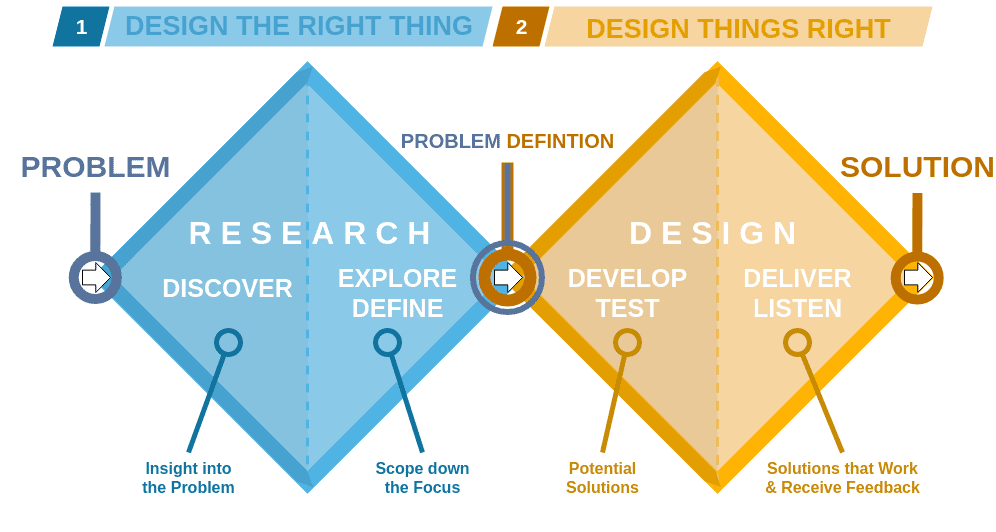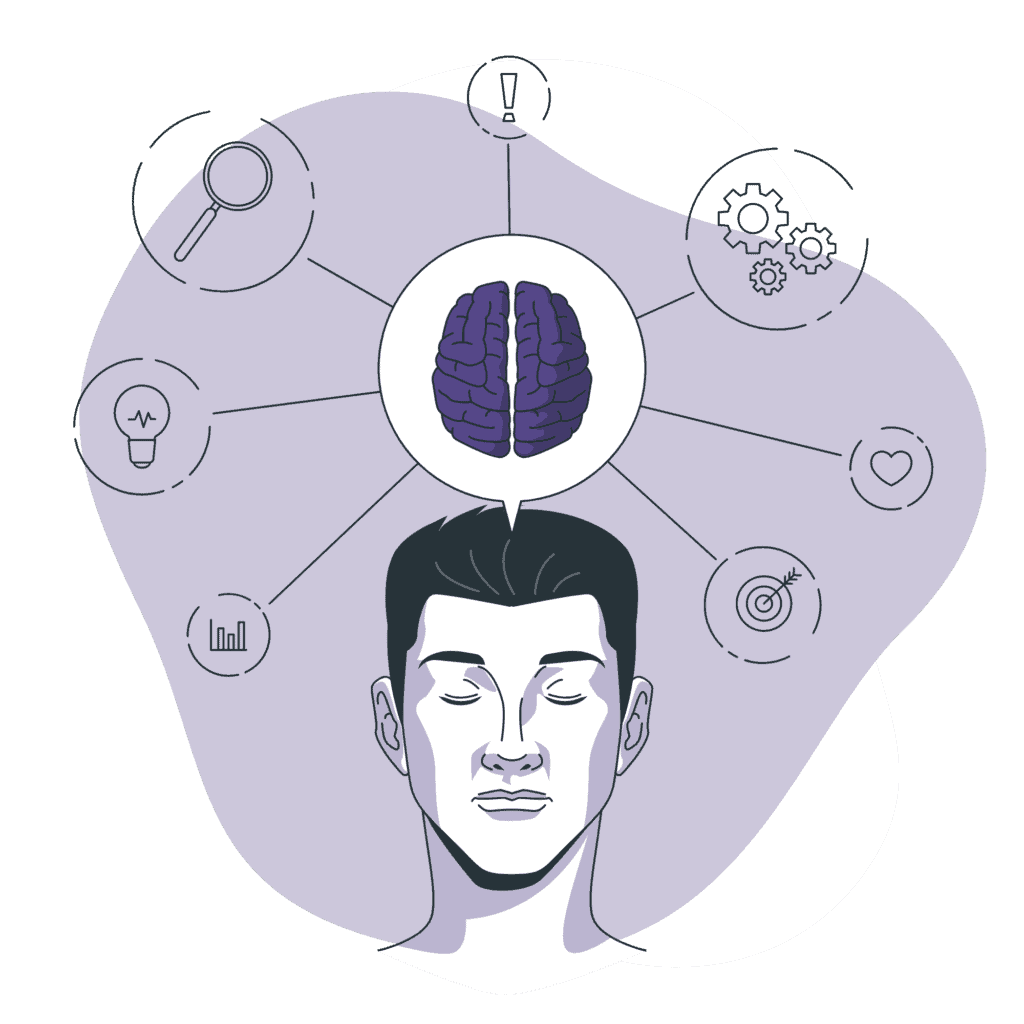The Basics of Design Thinking Copy
Design thinking is a methodology that is extremely useful in tackling complex problems by understanding the human needs involved, framing the problem in user-centric ways, generating ideas in brainstorming sessions and adopting a hands-on approach in prototyping and testing. At its core, design thinking is about empathy with users, a discipline in prototyping, and a tolerance of failure.
Coming up with an idea is easy. Coming up with the right one takes work.
In employing design thinking, you’re pulling together what’s desirable from a human point of view with what is technologically feasible and economically viable. The steps involved in the design thinking process are simple: first, fully understand the problem; second, explore a wide range of possible solutions; third, iterate extensively through prototyping and testing; and finally, implement through the customary deployment mechanisms. (Source)
There are a variety of potential design thinking models you can use but the one we will introduce you to in this training is the Double Diamond, which you can see illustrated below. This process model was popularized by the British Design Council and it is based on a convergence model of linguist Béla H. Bánáthy. In short, it represents a process of exploring an issue more deeply (divergent thinking) and then performing focused action (convergent thinking).
“Designing the right thing” and “Designing things right” are the key portions of the framework. In the first, you’re exploring and defining the problem space. In the second, you’re ideating solutions and testing them.

According to this model, the design process should have four phases:
- Discover: The process starts by identifying the problem and researching user needs.
- Explore: The second phase is to make sense of the findings, understanding how user needs and the problem align.
- Develop: The third phase concentrates on developing, testing and refining multiple potential solutions.
- Deliver: The final phase involves preparing your solution for launch. (Source)
For the purposes of building a digital community, we can frame the steps as follows:
1. Discover: Understand the problem your audience faces. The aim of this step is to paint a clear picture of who your end users are, what challenges they face, and what needs and expectations must be met. Based on that, you can define a clear human-centred problem statement, focused on your users’ needs.
2. Explore: Explore a variety of potential digital solutions. Come up with as many ideas as possible before narrowing it down to a select few good ones. Identify what channels would work best for your audience.
3. Develop: Scope down the focus based on your goals, resources, capacity & the competitors you face. Turn your potential solutions into prototypes that you test with your target audience to see whether your solution could work and where it needs improving. Based on user feedback, make changes and improvements before you spend time and money developing and/or implementing your solution.
4. Deliver: Build the right team (with the right mix of technical skills and subject expertise) so you can deliver the successful digital product.
While going through the content of this training, make sure to keep these steps in mind and reflect on them throughout the learning process.
If you’re curious about the approach and would like to know more, feel free to explore the resources below:

